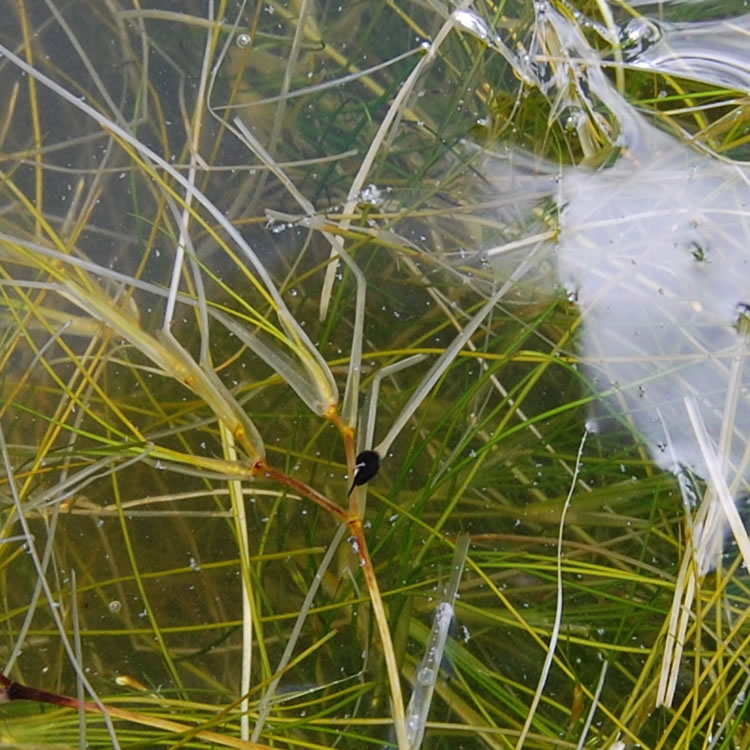Macrophytes

Community type
Habitat type
Tidal wetlands and macrophytes beds
Macrophytes are aquatic flowering plants, that often grow fully submerged underwater by attaching to the sediments of wetlands and estuaries. These plant types are often overlooked but macrophytes growing in shallow waters may be visible on muddy banks or along the foreshore when exposed by a low tide. Macrophytes also break off and float on the surface in big clumps. Although they are flowering plants, the flowers are tiny and hard to see. Large areas of macrophyte ‘beds’ or ‘meadows’ occur in the Derwent Estuary, especially in the middle estuary. For example, major beds occur in shallow waters between Granton, Bridgewater, Austins Ferry and Gagebrook. Macrophyte beds contain a range of plant species, often dominated by Rupia megacarpa (sea-tassel), with other common species being Lepilaena cylindrocapra, Lamprothamnium sp., and Myriophyllum salsugineum. In the middle estuary, macrophyte species occur in mixed assemblages with more marine seagrasses, while in the lower estuary seagrasses dominate.
Macrophytes play a vital role in the transport of nutrients from sediments into the food chain. They are an important habitat for aquatic macroinvertebrates. The plants provide protection for invertebrates from the current, as well as protection from predators, and some invertebrates feed on them directly, while others feed on algae that grow on leaves. Macrophytes are also a major food for plant eating fish, and a range of herbivorous waterbirds such as black swans and Eurasian coots.
